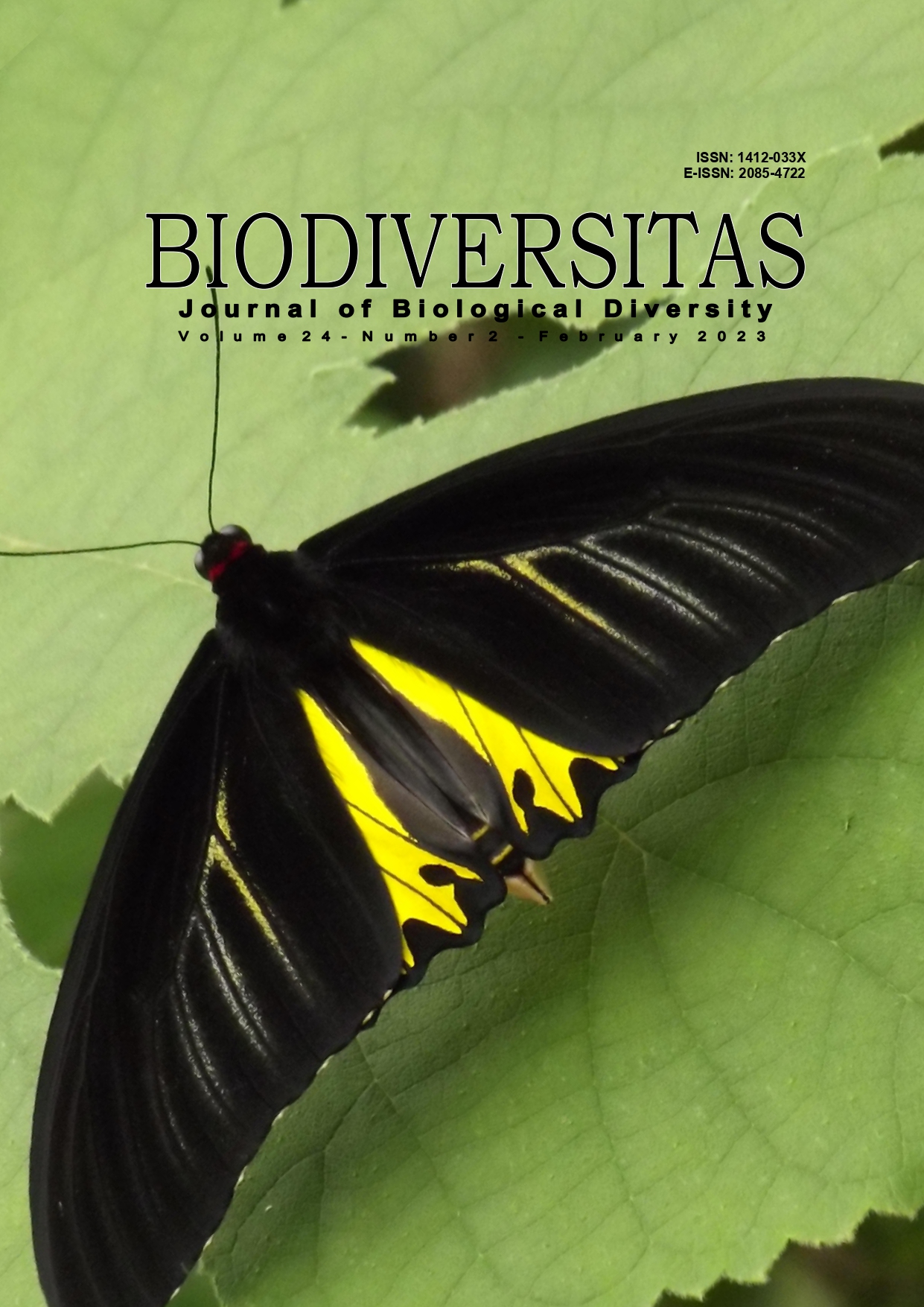Short Communication: Biological control of Meloidogyne javanica by Pasteuria penetrans and Trichoderma harzianum on tomato plants
##plugins.themes.bootstrap3.article.main##
Abstract
Abstract. Saleh HM, Shafeeq AF, Khairi MA. 2023. Short Communication: Biological control of Meloidogyne javanica by Pasteuria penetrans and Trichoderma harzianum on tomato plants. Biodiversitas 24: 847-851. This study was to determine the efficiency of Pasteuria penetrans and Trichoderma harzianum to control root-knot nematodes on tomato plants. To assess the biocontrol efficiency and the threshold level of spores/J2 for mass propagation of P. penetrans, four different levels of spores load on second-stage juveniles (J2) (1-3, 4-8, 9-14 and 15-25 spores/J2) were tested, Results showed that levels 9-14 and 15-25 spore/J2 achieved the best significant reduction in root gall index and the number of eggs/g root which were 2.4, 1.8, 1726 and 563, respectively as compared to the other treatments and control. It was also observed that 15-25 spores/J2 were more efficient (0.05) in reducing the number of eggs, females in the root and the number of J2 in 250 g of soil compared with other treatments. The addition of 2 g of bacterial inoculum at 3 and 7 days before transplanting gave the best result in reducing root gall index and the number of eggs/g root as it reached 2.0, 161 eggs and 1.4, 78 eggs compared with other treatments. The best day for the application of T. harzianumto reduce infection of root-knot nematodes was 7 days before transplanting at a level of 4 g as compared with other treatments. A significant reduction was observed in the root gall index (2.0) and the number of eggs (885 eggs) compared to the treatment of level of 2 gm of the fungal inoculum and M. javanicatreatment, which were 2.8, 1352 eggs and 4.6, 11317 eggs.

